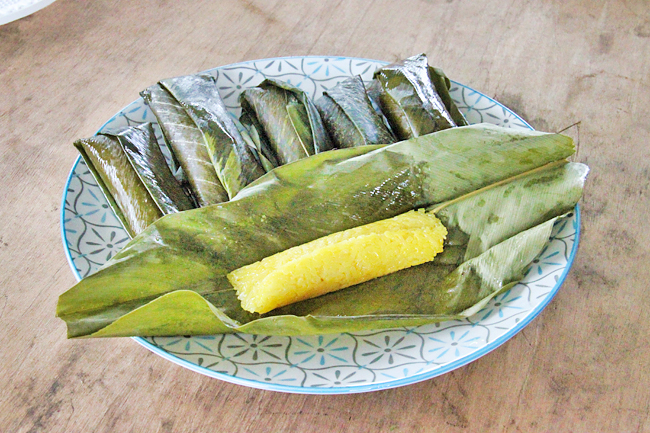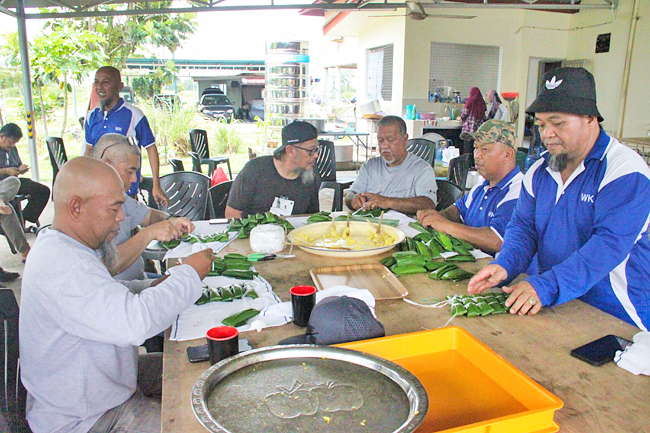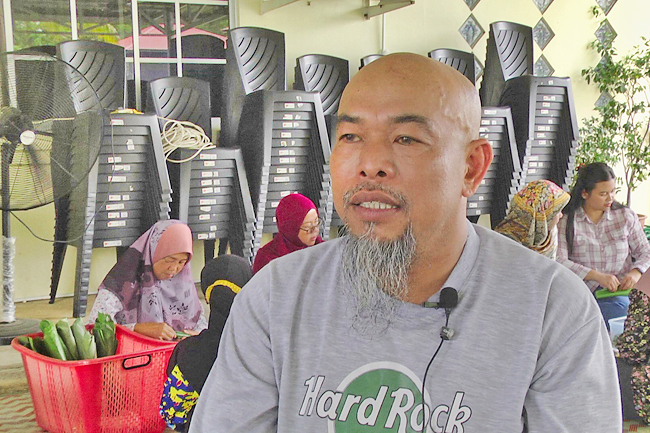Daniel Lim
Having been passed down for generations, the varieties of traditional kuih and cuisines form the basis of the nation’s cultural heritage when it comes to food, and among the most well-known example is kelupis.
As a traditional dish made of glutinous rice and wrapped in banana leaves along with a variety of fillings, kelupis is a dish beloved by many. They are often seen sold at stalls in tamu and markets, as well as lovingly hand-made treats served at family gatherings.
While many might be familiar with kelupis, there exist variations that were also similarly passed down among each of the seven puak (ethnic groups) in the nation. One such example is kelupis sulang passed down by the Puak Kedayan.
In helping maintain the culture of making the traditional dish, Warisan Kedayan Group members recently conducted a workshop in the Belait District with over 50 Kedayan members from across the nation.
In addition, the workshop also served as a way for the participants to reminisce about how their ancestors were able to cook the kelupis sulang as part of their daily routine while also bringing this close-knit form of kinship to the current times, establishing a closer relationship between all the attending Kedayan members who not only live scattered around the nation, but also across the border.



Speaking in an interview with the Bulletin, Warisan Kedayan member Kamnoorsim bin Haji Tassim explained the minute differences between what many would consider kelupis compared to kelupis sulang.
“Mostly it is in the taste and colour because, in kelupis sulang, the ingredients are mixed with the sulang fruit, which results in the end product being yellow compared to normal kelupis, which is normally white or off-white,” he shared.
As a locally grown fruit, he noted how sulang can be found plentifully in Bukit Sulang in the Tutong District. “It is chocolate coloured on the outside but yellow on the inside, and it is the inside that we use in making kelupis sulang.”
While further comparing normal kelupis with kelupis sulang, he explained that kelupis sulang is consumed on special occasions, with one such occasion being a Tahlil and Doa Arwah ceremony that the group had planned for the following day.
“With kelupis, you can easily find them being sold in stalls, but not so with kelupis sulang. So this makes it a special and rare treat for Kedayan groups,” he highlighted.
As time continues to march on, Kamnoorsim hoped that the unique tradition of making kelupis sulang can be maintained, with one way being through gatherings such as those organised by the Warisan Kedayan Group.
“I do hope that the art of making kelupis sulang can be preserved,” he added.
“Not only do gatherings such as this bring the Kedayan community from across the nation together, but they also serve to help raise awareness and pass down the knowledge and skills to the next generation so that they would know how to make kelupis sulang from A to Z, such as how to procure the ingredients as well as the proper techniques and handiwork needed to make and wrap the kelupis sulang.”
Despite the changes in time and the influence of modern cuisine, kelupis has managed to remain relevant and popular in Brunei. Its taste and cultural significance have been passed down from generation to generation, and it continues to be a dish that brings people together.
Kelupis may have evolved over time, but its essence remains the same – a delicious and meaningful part of Brunei’s culinary heritage.


